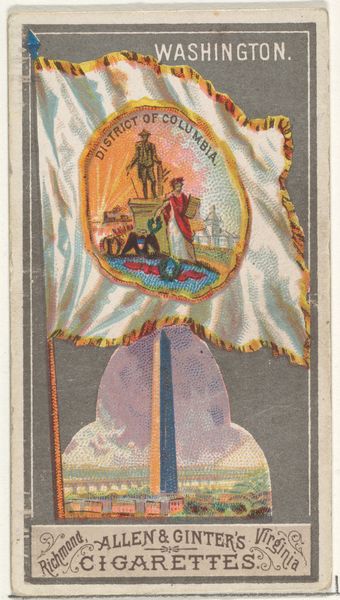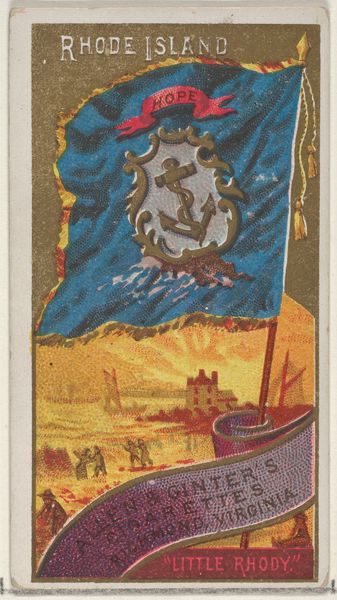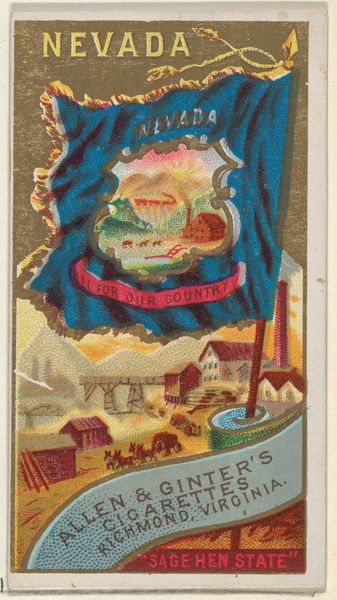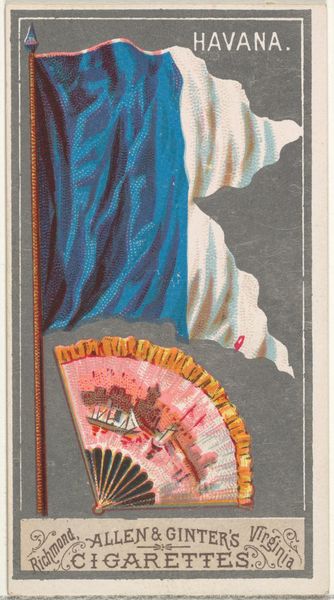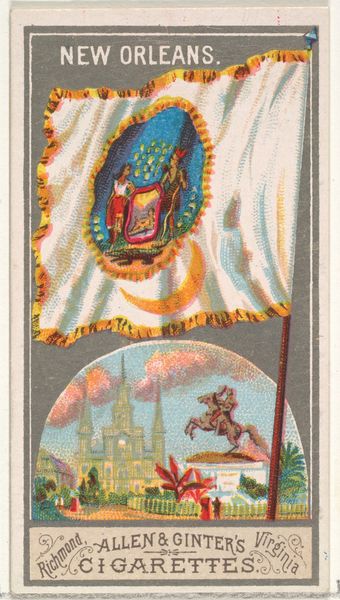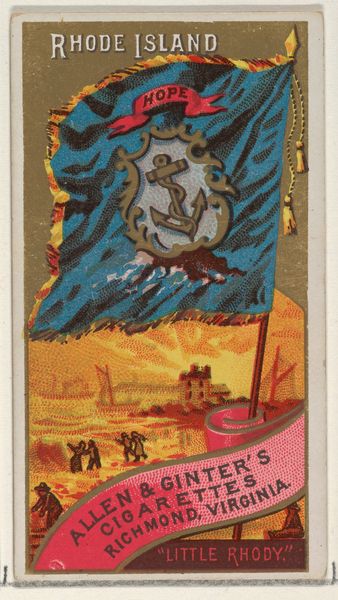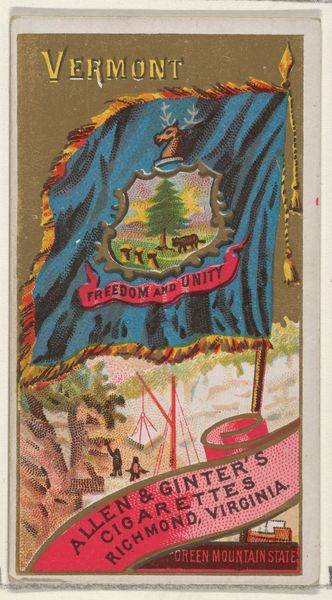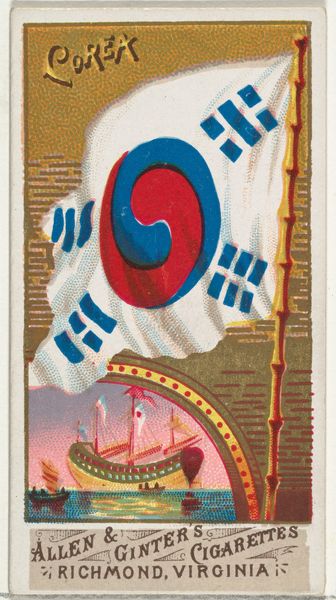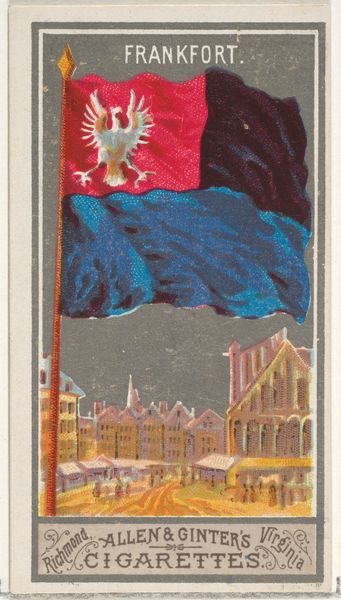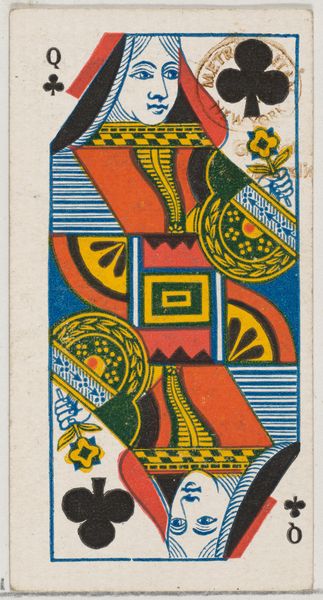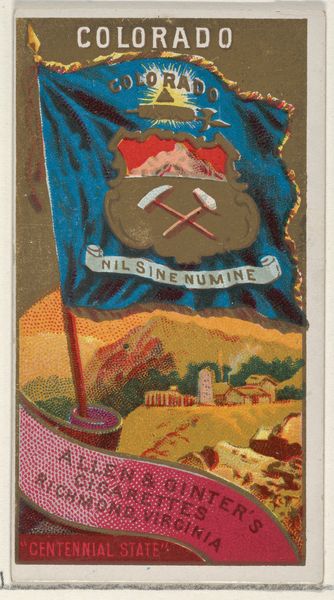
Biscay, from the City Flags series (N6) for Allen & Ginter Cigarettes Brands 1887
0:00
0:00
graphic-art, print
#
graphic-art
# print
#
watercolour illustration
Dimensions: Sheet: 2 3/4 x 1 1/2 in. (7 x 3.8 cm)
Copyright: Public Domain
Curator: Here we have a print titled "Biscay, from the City Flags series," produced by Allen & Ginter around 1887. It's one of a series of collectible cards originally included in cigarette packs. Editor: Immediately, the flag above evokes power, tradition. The blue and the red cross grab your eye with that almost harsh angularity and contrast with the little domestic scene at the bottom. Curator: The flag indeed dominates. It features the Cross of Burgundy, a symbol historically linked to Spain and the Habsburg dynasty, representing territorial claims and dynastic power. Its presence here, juxtaposed with a seemingly ordinary scene, raises interesting questions. Is it about imperial reach, cultural influence, or something else entirely? The Allen & Ginter brand certainly aimed to package exoticism. Editor: And the choice of scene! A flamenco dancer with onlookers. It all points towards cultural appropriation. The card uses visual shorthand – a recognizable flag, a stereotypical activity – to evoke a place and its people. How do we confront this casual reduction today? Curator: The flattening of cultural identity for commercial purposes raises significant concerns. The "City Flags" series participates in a broader context of late 19th-century imperialism and commodity culture, using simplified images of flags to stimulate consumption and project national power, but in many ways this card also illustrates the concept of Japonisme because its design appears to mimic stylistic properties that are clearly linked to woodblock prints, thus furthering these problematic cross-cultural issues of representation. Editor: Thinking about the red cross—it has such a forceful visual weight! Historically, culturally…it signifies conquest but in conjunction with a watercolor of a domestic scene, does it mean we should be looking into how people resist that? Curator: Or possibly, how national identity is both imposed and performed. It suggests how intertwined trade, visual representation, and cultural perception became during this era. I find this item intriguing in the complex historical layers it represents. Editor: Definitely something to mull over…symbols in art speak in so many registers. And by interrogating images like this one, perhaps we find clarity when those different messages conflict.
Comments
No comments
Be the first to comment and join the conversation on the ultimate creative platform.
